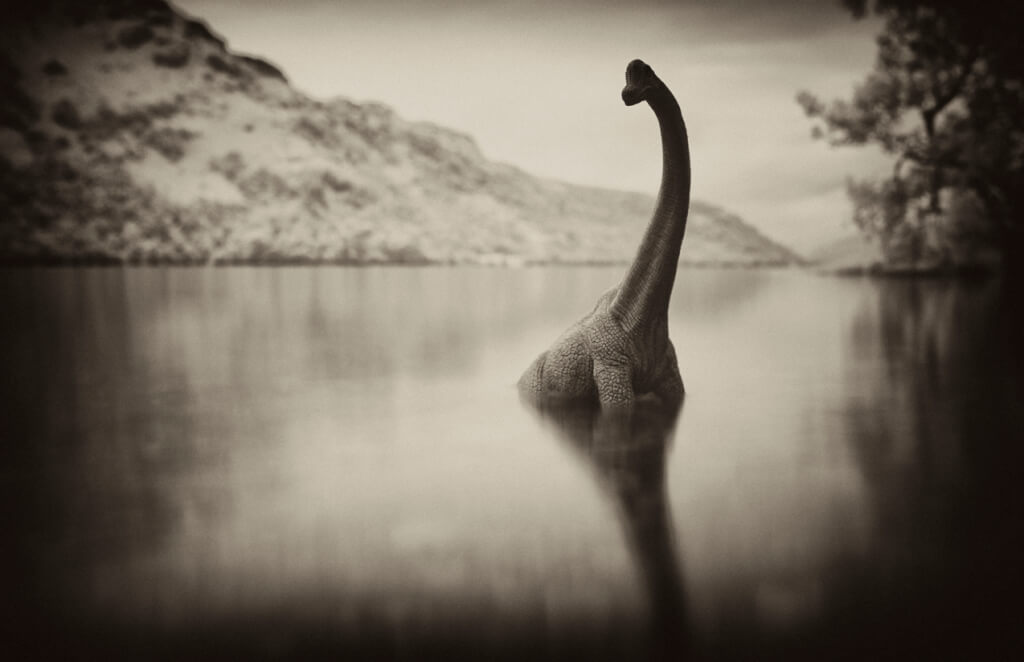Scientists Find Fossils, Now Believe Loch Ness Monster 'May Exist'
Adherents of the Loch Ness monster have long believed that the hero of Scottish folklore could be a prehistoric reptile with a small head and long neck, similar to a plesiosaur. However, cynics argued that plesiosaurs could not live in Loch Ness because they needed salt water. Now scientists have come to the conclusion that the monster may well exist. Writes about it Independent.

Photo: iStock
The speculation came after researchers discovered fossils of small plesiosaurs — the long-necked marine reptiles of the dinosaur era — in a 100-million-year-old river system that is now the Sahara desert in Morocco. This suggests that they could live in fresh water.
The findings of University of Bath scientists, published in the journal Cretaceous Research, suggest that plesiosaurs were adapted to fresh water and may even have lived their lives like today's river dolphins.
Among the fossils are bones and teeth of three-meter adults and a paw bone of a one-and-a-half-meter cub.
They hint that these creatures commonly lived and ate in fresh water, along with frogs, crocodiles, turtles, fish, and the huge aquatic dinosaur Spinosaurus.
On the subject: Living dinosaur: in Australia found 'vampire fish', which is more than 200 million years old
David Martill, co-author of the article, said: “It strikes me that in an ancient Moroccan river there were so many predators living next to each other. It wasn't a place to swim."
Plesiosaurus teeth appear to be heavily worn, similar to Spinosaurus, suggesting that they ate the same armored fish that lived in the river rather than being casual visitors.
Dr. Longrich, author of the paper, acknowledged: “We don't really know why plesiosaurs live in fresh water. It's a little debatable, but who said that since we paleontologists always called them "marine reptiles", they had to live in the sea? Many sea creatures lived in fresh water."
You may be interested in: top New York news, stories of our immigrants and helpful tips about life in the Big Apple - read it all on ForumDaily New York
The first complete plesiosaur skeleton was first found in Lyme Regis, Dorset, in 1823 by Mary Anning, a fossil hunter. The creature had a small head, a long neck, and four long fins.
According to a press release from the University of Bath, the new discovery showed that the Loch Ness Monster "may very likely exist."
The informational message said: “Plesiosaurs lived not only in the seas, but also in fresh water. The fossil record also shows that the last plesiosaurs finally died out at the same time as the dinosaurs, 66 million years ago.”
Read also on ForumDaily:
The White House will help Americans fight the heat and make their homes efficient: new programs
California company creates flying motorcycles that can be driven without a pilot's license
Inflation compensation: 18 states pay residents assistance to cushion the blow from rising prices
Management, programming, language learning: 50+ free online courses for every taste
Subscribe to ForumDaily on Google NewsDo you want more important and interesting news about life in the USA and immigration to America? — support us donate! Also subscribe to our page Facebook. Select the “Priority in display” option and read us first. Also, don't forget to subscribe to our РєР ° РЅР ° Р »РІ Telegram and Instagram- there is a lot of interesting things there. And join thousands of readers ForumDaily New York — there you will find a lot of interesting and positive information about life in the metropolis.
-
Where in the USA to buy the medicines we are used to: a list of pharmacies5330
-
Six ways to cut your medical bill in the US436
-
Joy to Work: 37 Jobs with Lowest Stress and Good Pay419
-
What folk remedies treat the common cold in the USA: what surprises our354
-
Personal experience: why immigrants have more chances of success in the USA than Americans290
-
Burger Arthritis: How Fast Food Triggers Autoimmune Diseases233
-
XNUMX stunning US lavender farms that will take you to French Provence220
-
Actions in a terrorist attack: how to survive yourself and help others6333
-
Where in the USA to buy the medicines we are used to: a list of pharmacies5330
-
How to hit the jackpot: tips from a man who won the lottery 7 times4898
-
Life after death: what happens to places of mass executions in the USA3883
-
How to start a profitable business in the USA, if you have only $ 203281
-
4 US Social Security Traps and How to Avoid Them1493
-
Street, avenue, boulevard or drive: how to understand the classification of US streets and roads1461











